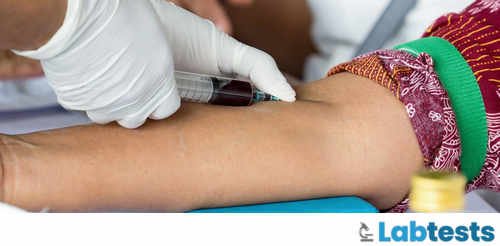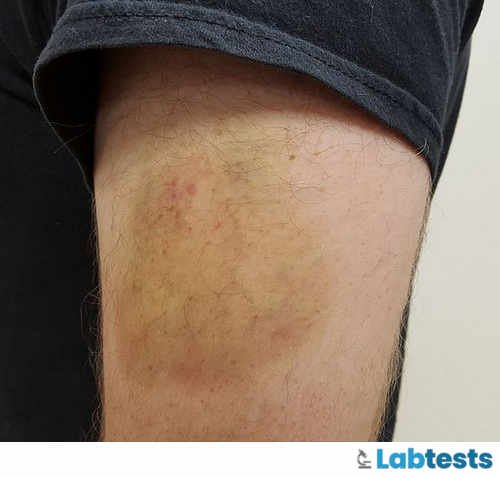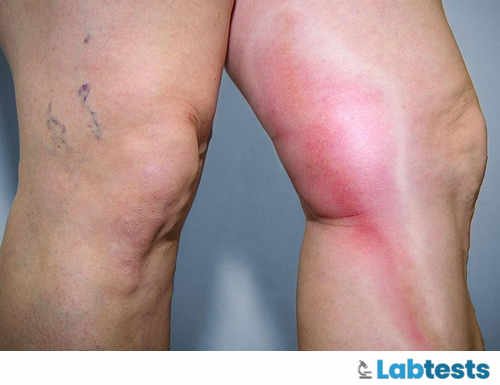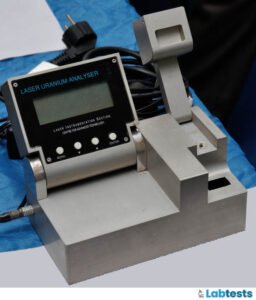Venipuncture is one of the most popular procedures performed with the aim of collecting blood from an individual’s body. Needless to say, there are many advantages of acquiring blood, but this procedure can often have complications.
These include:
- Extravasation
- Allergies
- Hematoma formation
- Fainting & syncope
- Nerve damage
- Hemoconcentration
- Excessive bleeding
- Infection
- Phobias
- Arterial puncture
- Edema & thrombus
However, you can indeed avoid such unpleasant situations if the person performing the blood collection process is trained properly. Moreover, the ratio of the complications mentioned above seems to be pretty low.

It is time to help you understand more about different terminologies included in the list above.
Syncope refers to the uncertain loss of consciousness, resulting from the lack of blood supply to the brain. People often faint, i.e., experience syncope while undergoing the procedure of venipuncture.
Fainting & Syncope
Some common symptoms you may notice on such occasions, include dizziness, blurry vision, light-headedness, cold body, etc. According to experts these signs suggest you have a low blood pressure.
So, what should be done in these situations. Here’s what you can do if a patient seems to be losing or have lost consciousness during venipuncture;
- Abort the procedure altogether
- Be gentle while taking off the tourniquet and needle from the patient’s arm
- Use a cotton gauze to put pressure on the punctured area of the skin
- You have to position the patient’s head between their legs if they are sitting
- Doctors also recommend putting a cold compress on the patient’s neck for quick revival
It is also advisable to supervise the fainted individual for 15 to 30 minutes once they regain consciousness. While it significantly occurs with the elderly people, young individuals are also vulnerable to it.

Diving into more details, three types of syncope are as follows:
Vasovagal syncope
Also known as neurocardiogenic syncope, is when a person faints upon seeing their blood.
Carotid sinus syncope
This happens when the carotid sinus, present in the carotid bifurcation, reacts strongly under pressure. It is important to note that the consequences of this can be fatal.
Situational syncope
As the name suggests, this type of fainting occurs when a person is highly sensitive to specific triggers and situations, such as the sight of their own blood.
Hematoma Formation
One of the most commonly faced responses to venipuncture, hematoma refers to the blood being accumulated under the skin. According to health care experts, hematoma is another name for a bruise. Hematoma causes the punctured portion of the skin to turn purple or blue. Why does it happen? Here’s what could go wrong:
- The needle goes through the vein, leaking blood out of the punctured area as well as into the nearby tissue.
- Lack of pressure on the puncture area with a cotton swab after finishing the process of venepuncture.
- People suffering from bleeding disorders and those on anti-coagulant medicines (drugs to prevent blood clots) are more vulnerable to hematoma formation.
- Putting in the needle without being sure if it’s the right vein can also lead to hematoma formation.
Basilic vein should be avoided which is near to the brachial artery and other nerves while executing the process of collecting blood. This is because it is a highly sensitive nerve, vulnerable to bruises. Otherwise, it can cause the patient a lot of pain as well as unnecessary loss of blood through bleeding.

image source: wikipedia
Experts suggest phlebotomists to utilize the anti-cubital fossa, that is the anterior of the elbow, to perform the procedure. It is a safe strategy that continues to work effectively and efficiently. It also helps to be aware of the patient’s history beforehand to figure out the possibilities of running into any uncertain situations. Prior warning can indeed prove worthwhile for everyone, including the patient.
Phlebitis
To put it simply, phlebitis relates to the inflammation of a vein. This could occur due to the wrong insertion of a needle or cannula into the vein. Furthermore, this condition can lead to thrombophlebitis, which is the inflammation of a vein resulting from multiple blood clots.
As far as the symptoms are concerned, warm skin, itchiness, redness, pain, and swelling are among the most common ones. It can cause a lot of irritation while blocking the blood flow in your veins. You can treat this condition with anti-inflammatory medications and warm presses.

Image Source: centerforvaricoseveins.com
So, how can you steer clear of it? It is necessary to clean the skin thoroughly before inserting any needle. This is because harmful micro-organisms on our skin often contribute to the contraction of phlebitis. Although, it is a rare condition witnessed by phlebotomists, it is good to take precautionary measures.
How to perform Venipuncture in a seamless manner?
Performing venipuncture in the right way can eliminate any unpleasant occurrences during or after the procedure. Here’s how you can do it;
- Wash your hands
- Apply the tourniquet but don’t tighten it too much
- Palpate a vein by touching the tightened hand of your patient till you find a suitable one
- Next, you need to put your gloves on
- Now you need to clean the area where the needle will be entered
- Prepare the needle and attach it to a barrel or bag in which the blood will be collected
- Remove the needle’s cover and ensure its bevel is upwards
- Secure the vein and insert it in from an angle of 20 to 40 degrees
- Attach the vacutainer tube to the barrel and let it fill accordingly
- Lastly, remove the tourniquet with the needle still inside
- Then, gently remove the needle as you put a cotton gauze on the punctured area
It is good to alarm the patient of feeling a slightly sharp scratch as the needles goes in. It can help reduce anxiety and fear to a great extent.
Frequently Asked Questions
Q1. What is venepuncture?
As the name suggests, it is the puncture of a vein to execute the medical procedure of collecting blood from a human body.
Q2. Are venipuncture and phlebotomy the same?
While both venipuncture and phlebotomy involve the collection of blood, there is a little difference between the two. You can only use phlebotomy for drawing blood specimens. On the other hand, you can administer an IV for longer periods through venipuncture.
Q3. What are the methods of blood collection?
There are the three most common methods for the collection of blood
1. Venipuncture sampling
2. Fingerstick sampling
3. Arterial sampling
Q4. What is the most frequent complication of blood collection?
While all complications are possible if venipuncture is not done accurately, hematoma formation seems to be the most common one faced during the procedure. It has been observed in 12.3% of venipunctures.
Q5. How to avoid the nerve damage resulting from venepuncture?
Do the following in order to prevent nerve damage during or after venipuncture:
1. Select the prominent vein that you can feel
2. Use a small needle while taking the vein depth into account
3. Make sure your patient is seated ideally
4. Anchor the vein carefully while entering the needle as well as taking it out
Q6. What are the causes of hemolysis during the blood collection?
Hemolysis, i.e., the destruction of red blood cells, during venipuncture can take place because of the following:
1. Incorrect needle size
2. Excessive suction
3. Unnecessarily bigger tourniquet
4. Wrong filling of tubes
5. Improper mixing of tubes
Q7. What to do for the hemolysis?
Treatment of hemolysis include
1. Surgery
2. Blood transfusions
3. Medications
4. Bone Marrow stem cell transplants
5. Shifts in lifestyle
Hemolysis is the worst complication one can face during or after venipuncture. It has a significantly adverse effect on your immune system, requiring prompt care and treatment.
Q8. What can you do in case of excessive bleeding during or after venipuncture?
Obviously, the goal is to stop the bleeding. First, you need to stop applying any pressure as there is a risk of tissue fluid coming out with the blood. Secondly, ask your patient to keep the puncture area covered with a gauze for some time. Another trick is to tell the patient to raise their arm above the head and apply pressure with the other hand for as long as 5 minutes.
References
- https://www.unitekcollege.edu/blog/stick-like-a-pro-tips-for-mastering-the-art-of-venipuncture/
- https://pubmed.ncbi.nlm.nih.gov/1578208/
- https://journals.lww.com/nursing/Citation/2007/11000/Reducing_the_risk_of_nerve_injuries.13.aspx
- https://www.scirp.org/journal/
- https://www.labce.com/
- https://www.mayoclinic.org/diseases-conditions/vasovagal-syncope/symptoms-causes/
- https://www.medscape.com/answers/811669-54345/what-causes-situational-syncope
- http://www.adventisthealth.org/documents/rideout/lab_manuals/blood-collection-adverse-reactions-and-patient-blood-volumes.pdf

